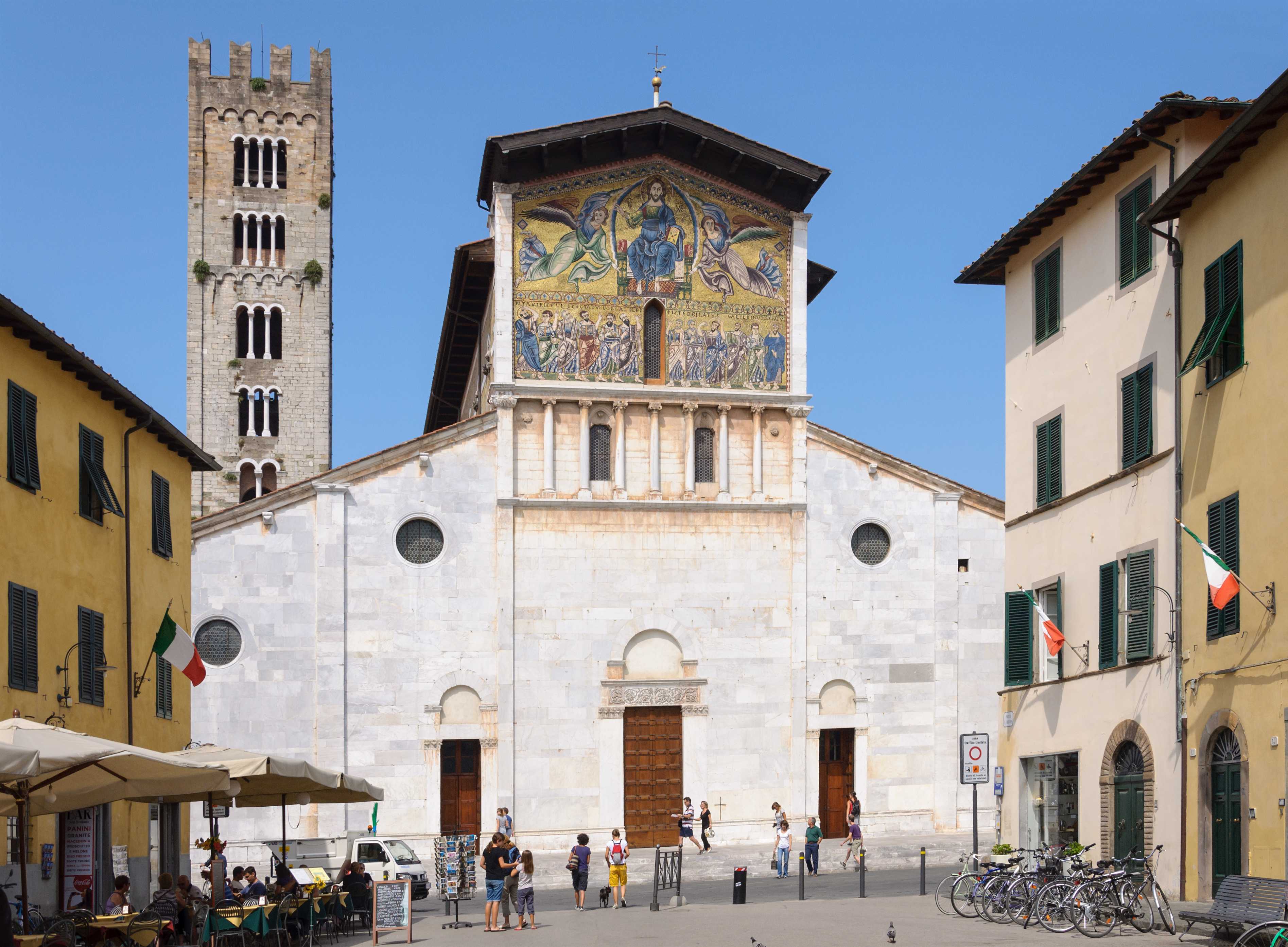Dating back to 685 AD, this church has a limestone facade with a beautiful Byzantine-style mosaic which was added in the 13th-century. The stunning interior is pretty well the same as it was in the Middle Ages, with a medieval painting in the Basilica and a polyptych (panel painting), by Jacopo Della Quercia, as well as a 12th-century baptismal font.
If you’re taking a stroll on the city walls, the church and its basilica is a fascinating sight because the building is so close, that you can almost touch it. Even if you approach it from Via Fillungo, you are almost overwhelmed by the imposing basilica in the little Piazza San Frediano, which is named after the saint who lies in an 8th-century crypt in the church.
The church hasn’t changed much - either inside or outs - since its consecration in 1147. It's the second-largest church after the duomo (the cathedral) and its entrance is (unusually) west-facing since it was the only way it could be squeezed into the city walls.
In the basilica, you can see one of the oldest examples of Lucca’s medieval painting: the three saints, Lorenzo, Vincenzo and Stefano, after whom the church was first named. It dates back to the early 12th-century. The frescoes and decorations inside date from the 14th to the 19th-centuries and in one of the chapels, there is a polyptych by Jacopo della Quercia, a famous Renaissance sculptor who is considered a precursor of Michelangelo.
However, the most important work is a spectacular baptismal font, signed "Robertus Magister" with ornately sculptured biblical characters on its sides.
Finally, don't miss the relics of Santa Vita, the patron saint of domestic servants, housewives and bakers. She is said to have transformed bread into roses when she was caught stealing it from the family for whom she worked, to give it to the poor. Her saintly aspect was reinforced when - after being exhumed - her body was found to still be largely intact; though this is probably explained by the local earth which is extremely rich in minerals. The frail body of the life-like saint is displayed in a shrine, inside a chapel which is said to have been built to incorporate the place where she was originally buried in 1278.

- Monday:
-
09:00 - 18:00
- Tuesday:
-
09:00 - 18:00
- Wednesday:
-
09:00 - 18:00
- Thursday:
-
09:00 - 18:00
- Friday:
-
09:00 - 18:00
- Saturday:
-
09:00 - 17:00
- Sunday:
-
09:00 - 18:00





